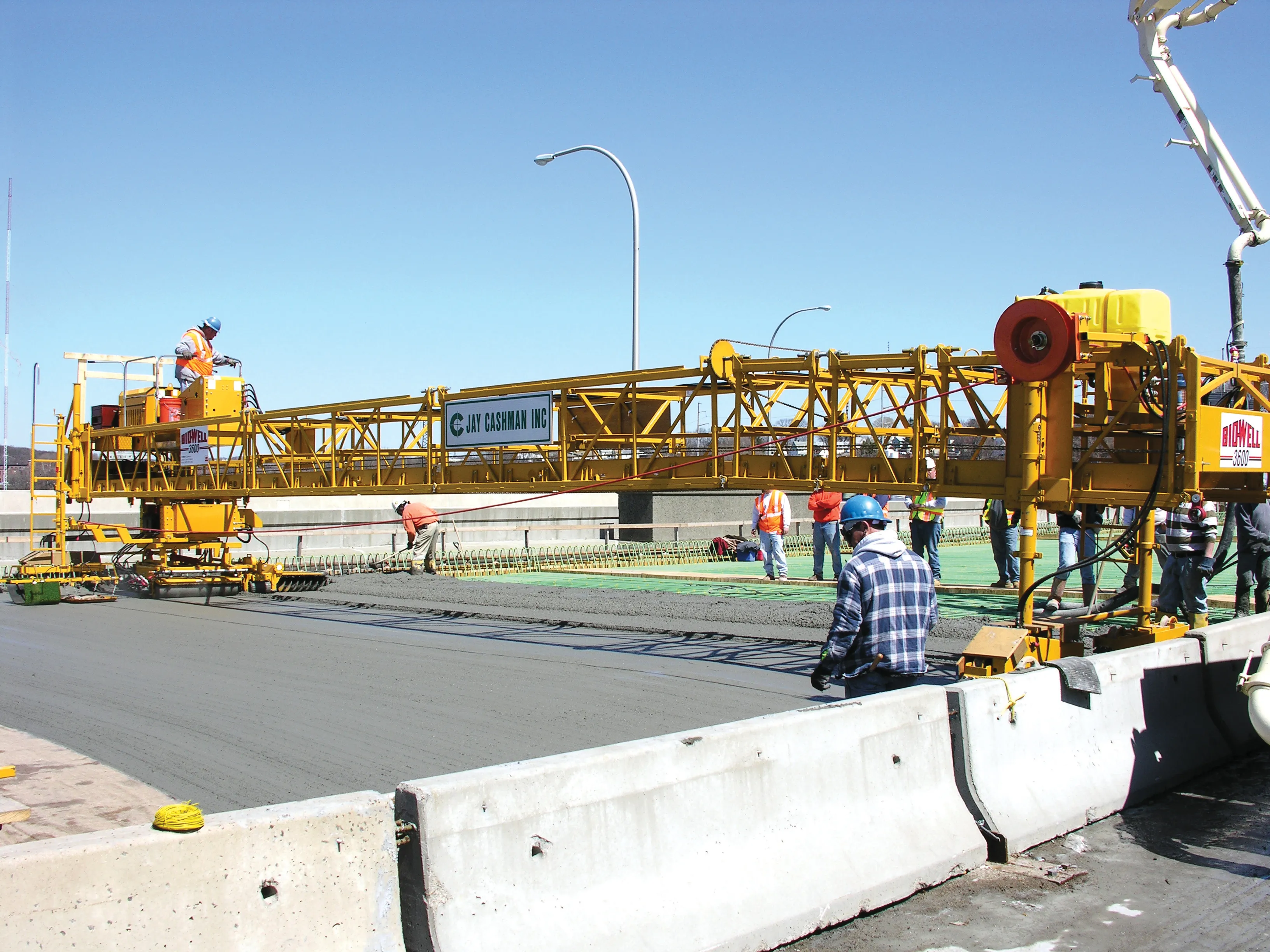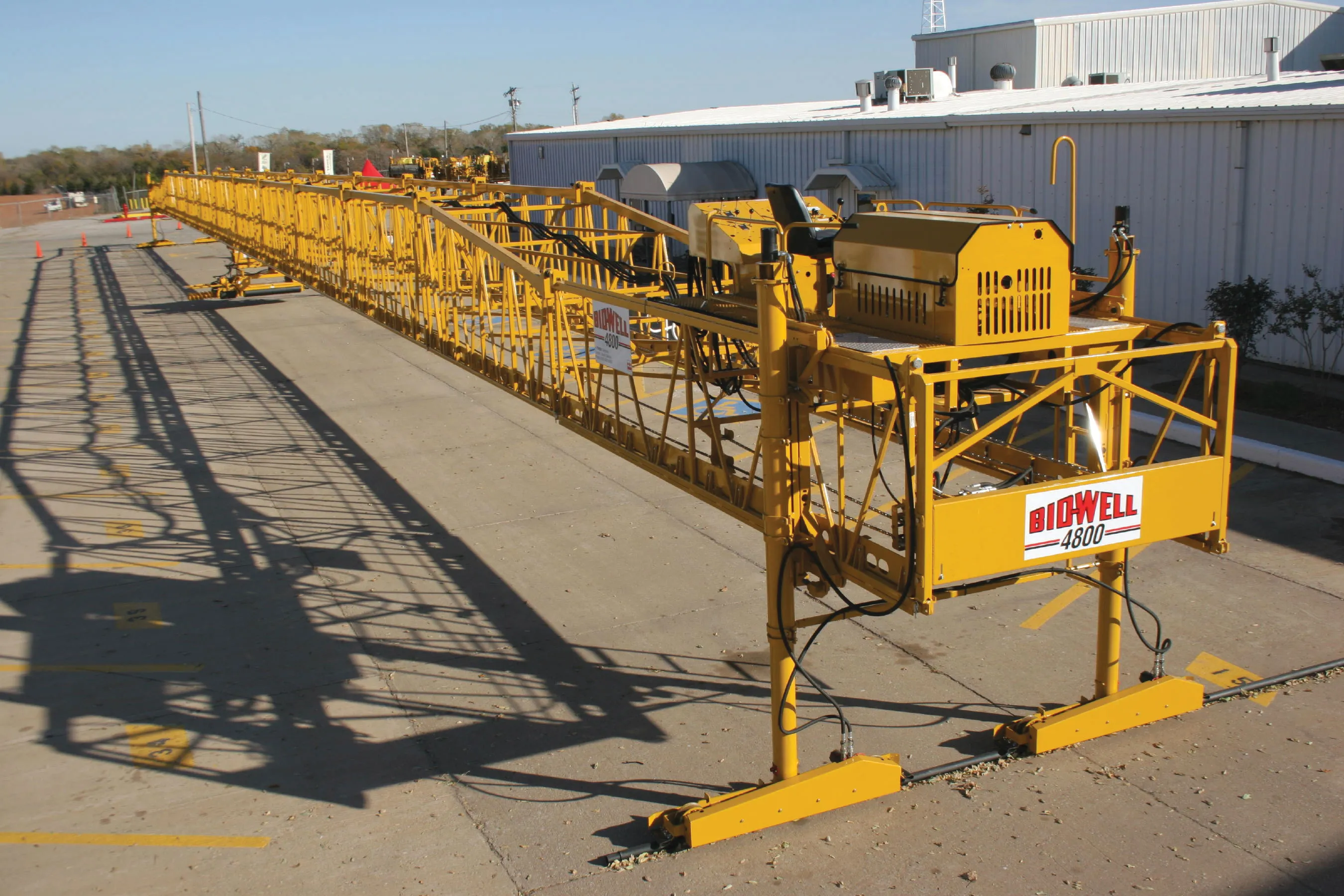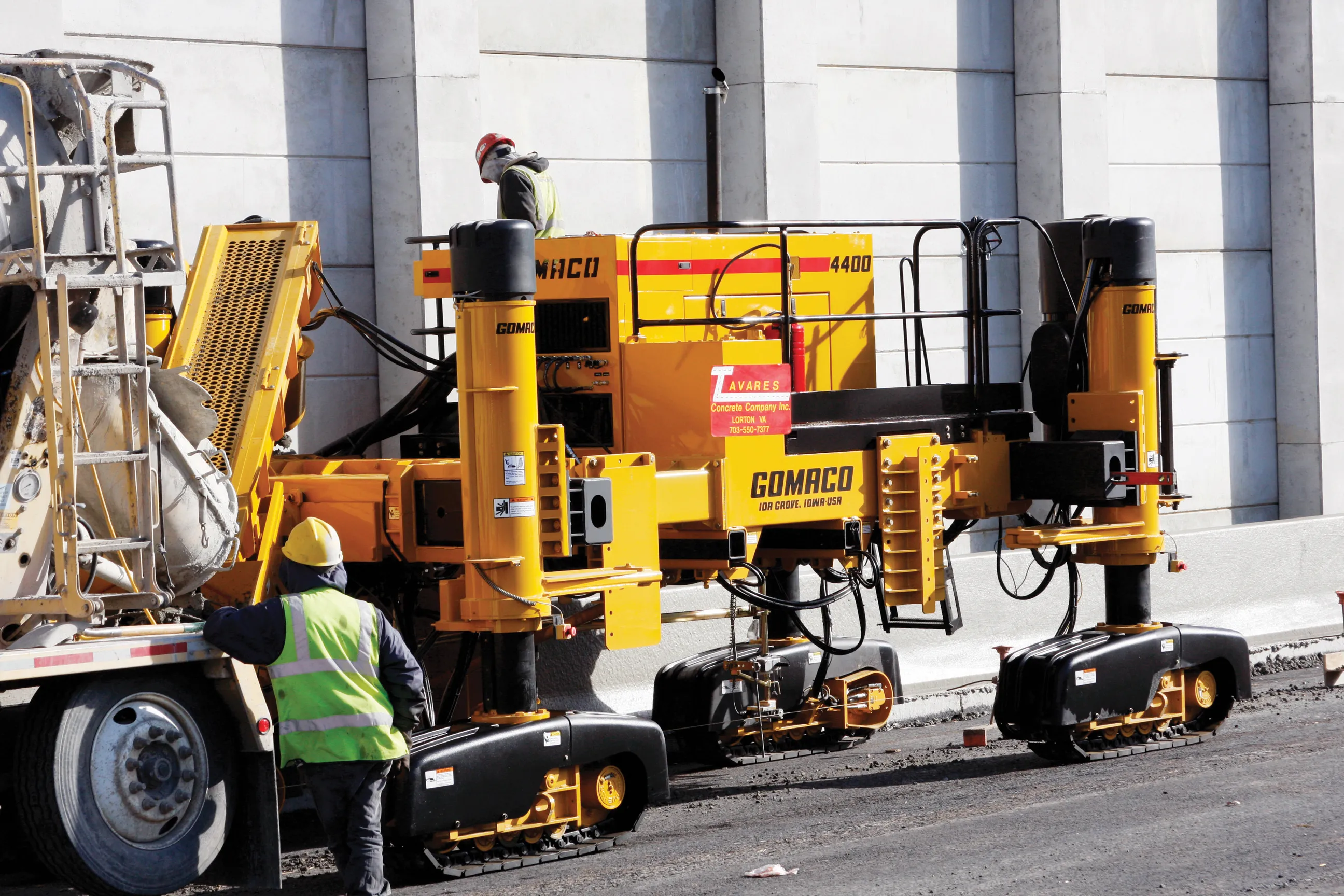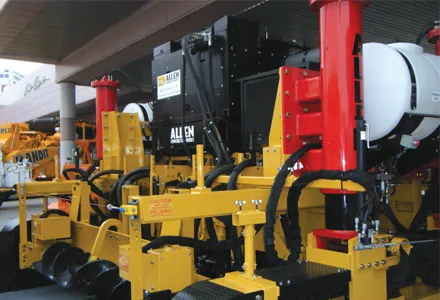To meet a need to carry out complex modern bridge designs, the Terex Bid-Well 3600 paver is available with truss transition inserts, increasing maximum paving width from 27.4-33.5m. The inserts adjust truss depth from 914-1219mm toward the paver’s centre, reducing frame deflection and this is said to increase surface profile smoothness. Offering paving widths from 4.6-33.5m with optional transition inserts, the 3600 gives companies more versatility for paving a wide variety of bridge designs, including mult
November 29, 2012
Read time: 3 mins

To meet a need to carry out complex modern bridge designs, the Terex Bid-Well 3600 paver is available with truss transition inserts, increasing maximum paving width from 27.4-33.5m. The inserts adjust truss depth from 914-1219mm toward the paver’s centre, reducing frame deflection and this is said to increase surface profile smoothness.
Offering paving widths from 4.6-33.5m with optional transition inserts, the 3600 gives companies more versatility for paving a wide variety of bridge designs, including multi-lane and skewed bridges.In addition to greater paving width flexibility, the patented
“Workers will occasionally walk through concrete that has been consolidated with backpack vibrators, disrupting the concrete,” says Dean Johnson, service manager for Terex® Bid-Well. “Reconsolidating concrete with Rota-Vibe® reduces the chance for chemical penetration through the surface down to the rebar, which increases bridge deck life.”
The paver carriage for the 3600 is powered by its own 15kW petrol engine with an optional diesel engine available. Dual 203mm diameter, double-flight augers require less power and are more efficient than single-flight augers. An optional single internal vibrator, mounted in front of the augers, gives contractors the flexibility of using the 3600 for light street work applications such as parking lots and urban street repair.
The standard 127mm hydraulic carriage lift raises the paving rollers from the surface when delays result in paving stoppage and allows the paving carriage to quickly pass over obstacles such as bridge bulkheads and exposed rebar for pedestrian walkways and kerbing. Independent rotation of the two, 1.2m long paving rollers allow the operator three different rolling directions; in unison, reversing or rotating toward each other. This increases versatility for sealing a variety of mixes.
Terex Bid-Well also offers a number of different options for the 3600 paver, so contractors can equip it to meet specific jobsite demands. Super-elevated turns in bridge design are becoming more commonplace. Bridges with cross slopes of more than 8% result in the paver exerting increased pressure on the rails, which require additional shoring. The Terex Bid-Well pivot leg option is said to allow the operator to pivot the machine’s leg to a true vertical position when paving super-elevations, reducing side forces on the rail system.
While a standard 3600 includes 102mm diameter heavy duty legs, optional 152mm diameter legs with a power leg raise/lower feature provide up to a 1194mm lift to hydraulically set the machine to grade. The Terex Bid-Well swing leg option delivers zero clearance when working in tight applications such as overlays. For use in difficult-to-finish mixes, contractors can also equip the 3600 paver with an optional fogging system.









